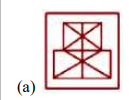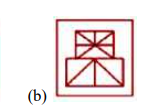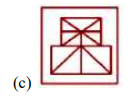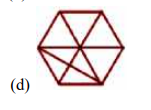Which of the following options has an odd pair ?
Sting of honey bee and scorpion
Wing of an insect and bat
Stipules of Lathyrus and petiole of Acacia
Forelimbs of frog and human
The correct Answer is:D
To solve the question "Which of the following options has an odd pair?" we need to analyze the pairs provided in the options and identify which one does not fit with the others based on the concept of analogous and homologous organs.
1. Understanding Analogous Organs:
- Analogous organs are those that have different structures but perform similar functions. For example, the wings of insects and bats are analogous because they serve the same function (flight) but are structurally different.
2. Analyzing the First Option:
- The first option mentions two organs that are analogous. If they are structurally different and perform similar functions, they belong to the category of analogous organs. Therefore, this option is not the odd pair.
3. Analyzing the Second Option:
- The second option also refers to the wings of an insect and a bat. As discussed, these are also analogous organs. Thus, this option is also not the odd pair.
4. Analyzing the Third Option:
- The third option mentions the stipules of Lathyrus and the petiole of Acacia. Stipules and petioles are both parts of plants but serve different functions. This means they are not analogous or homologous in the same sense as the previous examples. However, they do not fit the criteria for being an odd pair based on the context provided.
5. Analyzing the Fourth Option:
- The fourth option discusses the forelimb of a frog and a human. These are homologous organs because they have a similar structure (both are forelimbs) but serve different functions (the frog uses its limbs for swimming while humans use theirs for manipulation). This makes this option the odd pair compared to the others.
Conclusion:
The correct answer is the fourth option: the forelimb of a frog and a human, as it represents homologous organs, while the others represent analogous organs.
- Analogous organs are those that have different structures but perform similar functions. For example, the wings of insects and bats are analogous because they serve the same function (flight) but are structurally different.
- The first option mentions two organs that are analogous. If they are structurally different and perform similar functions, they belong to the category of analogous organs. Therefore, this option is not the odd pair.
- The second option also refers to the wings of an insect and a bat. As discussed, these are also analogous organs. Thus, this option is also not the odd pair.
- The third option mentions the stipules of Lathyrus and the petiole of Acacia. Stipules and petioles are both parts of plants but serve different functions. This means they are not analogous or homologous in the same sense as the previous examples. However, they do not fit the criteria for being an odd pair based on the context provided.
- The fourth option discusses the forelimb of a frog and a human. These are homologous organs because they have a similar structure (both are forelimbs) but serve different functions (the frog uses its limbs for swimming while humans use theirs for manipulation). This makes this option the odd pair compared to the others.
The correct answer is the fourth option: the forelimb of a frog and a human, as it represents homologous organs, while the others represent analogous organs.
Topper's Solved these Questions
Similar Questions
Knowledge Check
Which of the following options shows a pair of antagonist Phytohormones with respect to the given feature ?
AParthenocarpy : Auxin antagonist to GibberellinBAbscission : Ethylene antagonist to Abscisic acidCSeed Germination : Gibberellin antagonist to Abscisic acidDSenescence : Gibberellin antagonist to CytokininWhich of the following options has the correct pair of nephron parts that maintain pH and ionic balance of blood?
AProximal convoluted tubule and Henle's loopBDistal convoluted tubule and collecting ductCProximal convoluted tubule and glomerulusDcollecting duct and Henle's loopWhich one of the following options shows a correct matching pair?
AMan-UreotelicBBird-AmmonotelicCFish-UricotelicDFrog-Uricotelic
which of the following options has the given figure embedded in it.





View SolutionWhich of the following pairs has the same bond angle
View SolutionWhich of the following pairs has almost same radii ?
View SolutionWhich of the following pairs has quantities of the same dimensions?
View SolutionWhich of the following pairs has the same ionic are:
View Solution





